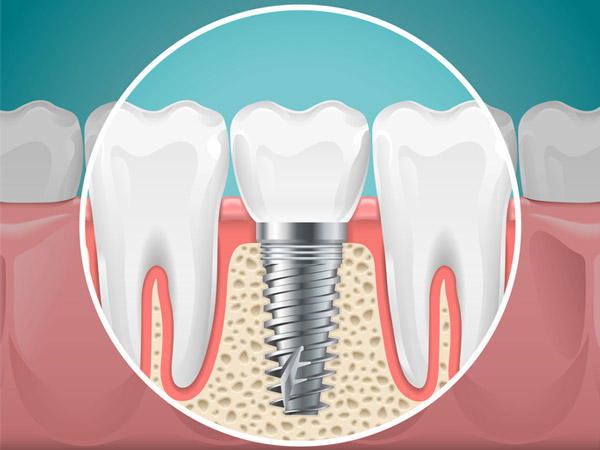It is quite necessary to maintain good and healthy teeth. Not only overall health is affected, but there is also a decrease in the beauty of a person, who is affected by rotting teeth and infected jaws. To support fake teeth, dental implants are used. Mostly, dental implants are used to support the jawbone. In addition, for about 15 years, when teeth or their pulp decay, dental implant procedures are an effective treatment. Depending on the bone structure and the amount of damage from infection, a dental implant can vary slightly for every person. A cosmetic dentist performs a thorough diagnosis in relation to determining whether grafting is required to perform a dental implant.
Treatment in dental implant in which decay and eroded teeth are replaced are fake dental tooth implants. These implants fill the gaps of the removed teeth and also prevent further infection. Since it is necessary to have the right dental implants that look natural, dental specialist dentists should be contacted for your dental implants.
The Basic Dental Implant Procedure
The basic dental implant procedure involves three parts: a tooth root implant, a pin, and finally a tooth. The entire process can take up to three months, most of which is healing time. That’s because dental implant procedure is much more involved and permanent than simply getting dentures. It’s also much better, and here’s why.
Dentures are uncomfortable and embarrassing. Denture wearers have to use a messy adhesive…basically gluing a rack of teeth onto the gums and hoping they stick. Unlike the results of a dental implant procedure, dentures can slide around, ultimately causing the wearer to speak in a strange way so as not to disturb the dentures. Terrible! The dental implant procedure is permanent so there’s nothing to take out at night, nothing to clean (other than brushing your teeth) and no glue to buy.
The first step of the dental implant , after consultation, is oral surgery to implant a titanium rod into the gums. This will be the anchor of the new teeth. Actually, it’s implanted into the bone socket…under the gums. It’s a titanium rod that will become part of the jaw. It takes quite a while for the jawbone to heal after this. The bone has to heal and grow around the rod but once it’s done, after six to twelve weeks, the patient has a permanent and solid foundation upon which to anchor a new tooth.
The second step of the dental implant procedure is to attach a connector post which is called an abutment. This smaller post will connect the new post in the jawbone to the tooth. Finally, the new tooth is then attached to the abutment. The new tooth is called a crown.
What to Expect With Dental Implant Surgery
If you’ve had a tooth injury and your dentist has determined that it’s necessary to replace one or more tooth roots, then you will want to know what to expect with dental implant surgery. What type of sedation is used, what exactly happens, what is a bone graft, and how long it takes are common questions raised by patients who are about to undergo the dental implant procedure.
Types of Sedation in Dental Implant Surgery
This type of procedure is sometimes done under general anesthesia, but that will be determined by your oral surgeon. In order of the amount of sedation, the options are:
- General Anesthesia
- Moderate sedation with an IV drip
- oral sedation
- local anesthesia
There are risks involved with general anesthesia but some oral surgeons prefer the predictability of the outcome when the patient is fully sedated. Dental implant surgery is, after all, surgery on the bone.
What is Bone Grafting and Will I Need It?
One of the biggest questions about dental implant surgery, after the type of sedation required, is about bone grafting. Not everyone undergoing the dental implant procedure will have to have bone grafting. Only those patients whose jawbone is too soft or too thin will have to have bone taken from another place in the body and grafted onto the jawbone. The bone graft will help support your dental implant so you can chew properly when the implant procedure is completed.
A bone graft will be taken from another place in your jaw, or if that’s not an option it will be taken from your hip or your lower leg (the tibia). This part of the dental implant procedure will take at least six months to heal.
How Long Does it Take to Completely Heal From Dental Implant Surgery?
So, if you’re having a bone graft, the total time for your dental implant surgery, including healing, can be fifteen months. That’s six to nine months for the bone graft to heal and another six months for the dental implant to heal.

